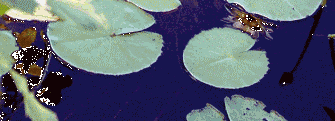 |
 |
Music in Indonesia III
8. Continue to plan for presentation to a wider audience
Description of the methods
Mrs Boldwill has students continue to rehearse not only
their
're-created' items but also the new 'original' lancaran in readiness
for presentation to a more public audience. They also begin
preparing a classroom display visually supporting their proposed
performance. She encourages her students to think about ways of
presenting their items and their art display which might, in
themselves, be new and different enough to 'grab' the attention of
those attending the performance. When these additional
presentation activities are completed they decide to test them out by
presenting the display as part of a trial 'dress rehearsal' before the
middle school assembly.
Following a positive reception of both their performance and their
visual display before the assembly they return satisfied to their
classroom. Here they share with each other and Mrs Boldwill
positive and negative feedback from themselves and from friends
attending assembly. There are some minor changes they would like
to make, mostly to their visual work. Over the next few days they
attend to this and claim now to be ready to perform.
Assessment points and indicators
Mrs Boldwill records, informally, how well her students
use
previous knowledge in the preparation of their music for
performance. At the same time she notes how they employ arts
judgements to determine a balanced program
Crossover to other learning areas
Art
9. Using the study to continue to inform new original music
Description of the methods
Mrs Boldwill and her students negotiate this time in
groups to
create original items which reflect what they have found musically
during this series of lessons. Two groups of eight students
decide they would like to continue to create their own lancaran charts.
The remaining students are keen to experiment with angklung to create a
piece of music in the style of 'Tangan di kepala'. They
experiment with visual arrangements of the colour coding then interpret
the patterns created as music.
Mrs Boldwill encourages these activities but tries not to be too much a
part of the creating process. She does however ask them all to
report back to her every quarter hour of the hour long music session
set aside for this activity, as a class, for feedback and shared
discussion of how they are progressing and what strategies they are
using to get results.
Assessment points and indicators
Mrs Boldwill involves students in a final formative
assessment
of the group negotiated original works by involving peer and teacher
'assessment panels' to listen to and make observations about the
performance of each of the three 'original' items.
She also notes how imaginatively students have organised elements of
music to give feeling and form to their new works.
10. Presenting the music and arts to other audiences
Description of the methods
The class rehearses all the items learnt to date. This
now
includes two of the three original works created in the last
lessons. The program is quite impressive, comprising two
traditional and two 'composed' lancaran, two traditional angklung
performances and the 'patterned' one created in the last lessons.
There is also an informative display of posters and large-font text
related to music, art and language in Indonesia.
Nevertheless the students are still refining their concert program and
the visual presentation.
Assembly presentation
They
invite the full school assembly to share their
experiences learning about 'Indonesian Music' through performing and
visual arts. Some parents of students in the class have also
turned up to share the presentation. One father records their
program on video and this proves useful later when they are reviewing
their performance.
Mrs Boldwill again encourages her students to be constructively
critical of their own, the group and the class performances.
These shared comments form part of the final assessment of individual
and group work.
Assessment points and indicators
How the achievement of the unit will be demonstrated and assessedMrs Boldwill's cumulative records of student attitudes, critical to effective participation in music, are generally anecdotal. To an extent they are reflected in students responses and work, but this is not always a critical or equitable enough analysis. She takes note of students who provide support for others, who affirm the performances of the whole class, who communicate their enjoyment of the subject and the music and related activities under study, who actively participate in discussion and who prove, by their responses both musical and verbal, that they are active listeners.
She evaluates the activities educationally asking herself, and her students how appropriate the learning outcomes were. Where could we go from here?
Finally she wonders where she might take this work.
